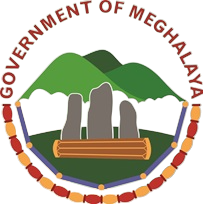The Meghalaya Health Systems Strengthening Project (MHSSP) is designed to enhance the health system performance and quality of services through strategic investment in the areas of program management, health insurance and quality of service delivery. This project will also invest in iterative learning processes from small scale innovative services that can be meaningfully integrated in the local context. The learnings from the project are expected to shed light on the health systems in other north eastern states, India and neighbouring countries with similar challenges.
The Meghalaya Health Systems Strengthening Project was signed on 28th October 2021 between the Government of India and World Bank - International Bank for Reconstruction and Development and was declared effective from 26th Nov 2021 and is for a period of Five years.
Project Development Statement: The project development objective (PDO) is to improve management capacity, quality and utilization of health services in Meghalaya.
PDO Level Indicators
- Percentage point increase in average performance score in targeted administrative units as per internal performance agreement from baseline. (management capacity)
- Cumulative Number of district hospitals which are NQAS certified. (quality)
- The percentage point increase in average quality index score for CHCs and PHC from baseline. (quality)crease in the number of patients utilizing government health services OPD in targeted facilities. (utilization)
- Increase in percentage coverage of households under the health insurance scheme. (utilization)
| Project Components | Project Cost (US$, millions) | IBRD Financing (US$, millions) | State Government Parallel Financing (US$, millions) |
|---|---|---|---|
| Component 1: Improving accountability, management and strengthening governance | 18.00 | 18.00 | 0.00 |
| Component 2: Strengthening systems to improve the quality of health services | 22.00 | 16.90 | 5.00 |
| Component 3: Increasing coverage and utilization of health services | 10.00 | 5.00 | 5.00 |
| Component 4: Contingent Emergency Response | 0.00 | 0.00 | 0.00 |
| Front-end Fee | 0.00 | 0.10 | 0.00 |
| Total | 50.00 | 40.00 | 10.00 |
- a. Development/ Integration of Health Information Management System.
- b. Capacity Building for State Health Cadre (including creation of additional resources) and training institutions.
- c. Retrofitting/ Renovation of existing infrastructure.
- d. Infrastructure and Training for Bio-Medical Waste Management (BMW).
- e. Investment to support Procurement and Supply Chain Management.
- f. Skill Enhancement of Specialist and other Medical Personnel.
- g. Investments for improving health service infrastructure.
- h. Technical and financial inputs for improving State Health Insurance Scheme (MHIS).
- a. Data driven decision making with stronger HMIS and electronic health records.
- b. Improved capacities of State Medical Training Institutions.
- c. Scaling up of Quality improvement interventions.
- d. Increased certification of health facilities (NQAS, IPHS, ISO etc)
- e. Improved procurement system for drugs and consumables supplies.
- f. Better Human Resource Capacity on Health Administration and BMW Management.
- a. Reduction in Infant Mortality Rate (IMR) and Maternal Mortality Ratio (MMR) to national average and towards Sustainable Development Goals (SDG).
- b. Increase in number of government health facilities with quality certification.
- c. Reduction of stockouts of essential medicines in government facilities.
- d. Increase in number of outpatients utilizing government health services at primary level.
- e. Increase in number of in-patients utilizing government health services at first referral level.

